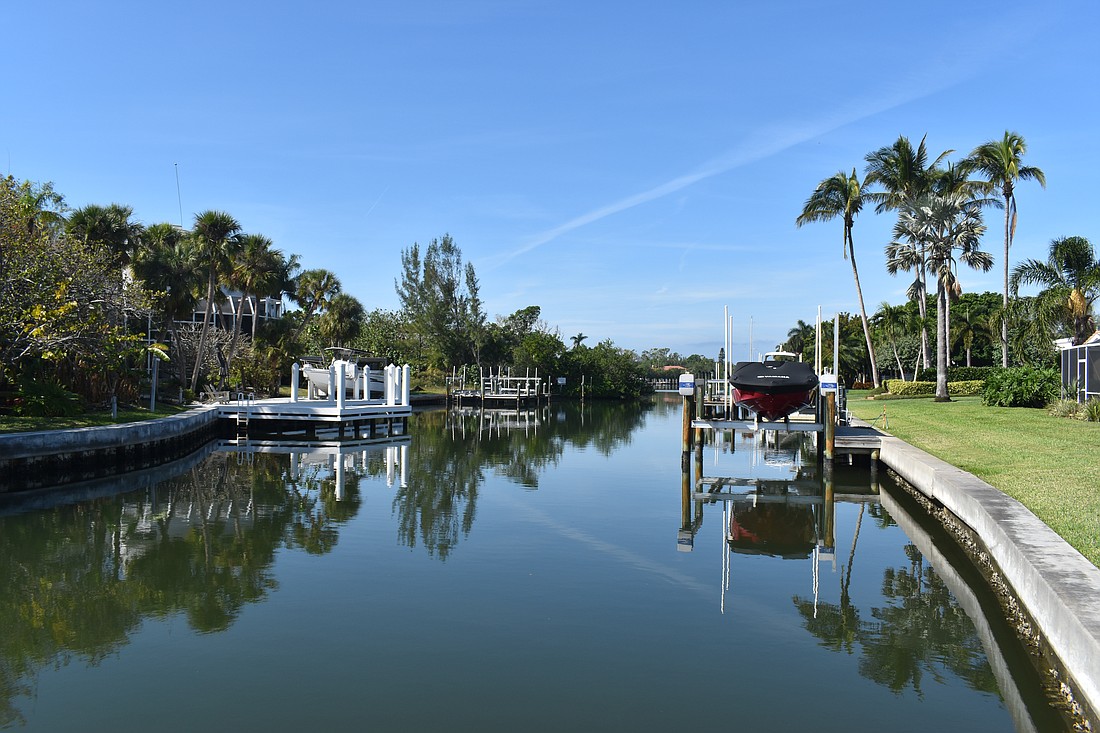- November 25, 2024
-
-
Loading

Loading

Boat owners may have to adjust where they anchor their vessels as proposed town code changes move forward in Longboat Key.
Proposed rules come after a Country Club Shores couple, Kathy and Todd Callahan, came to Longboat Key town commissioners asking for help with a navigation issue in their canal, resulting from a large moored boat.
The Callahans' presentation to the commission in June included a petition signed by 11 residents and featured pictures of the channel and a timeline of the issue’s development.
When initial complaints were received, the town sent a police department boat to assess the situation and found navigation was not impeded.
However, the marine patrol boat is much smaller than those owned by homeowners in the neighborhood.
The couple came back to the commission in October with the same issue, hoping the commission would decide to make some changes.
At that meeting, commissioners decided to direct staff to investigate whether other neighborhoods had concerns about navigability and what regulations were already in place in homeowners associations, if any.
“The kinds of boats that are coming in are not getting smaller,” Todd Callahan said at the Feb. 21 workshop. “They are getting larger.”
“It’s not just my canal and the boat,” Kathy Callahan said. “It’s overall the fact that we’re in a boating community. We need to be thinking forward and positively where it’s fair for everyone.”
A survey was sent out to canal-fronting property owners and homeowners associations. Of the 89 surveys that were emailed, the town received 12 responses.
Longboat Harbour is the only association that indicated its bylaws restrict boat size. Every other response indicated neighborhood associations merely followed the guidelines set by the town.
Town staff said it was hard to draw conclusions from the limited responses, but town staff summarized results:
Currently, the town has rules in place that state that permanent structures, such as docks, may not project into a canal more than 30 feet or 30% of the total width of the waterway, whichever is less. The town’s ordinance, created in early 2020, does not mention boats as obstacles, though.
The 2020 change sought to eliminate the possibility of new docks being built directly opposite of existing docks, though at the time, town leaders said their main concern was narrower docks largely in the north end of town, not wider ones planned in such communities as Bay Isles or Country Club Shores.

The town’s proposed language keeps the 30 feet or 30% language, but would apply this regulation to include vessels instead of just addressing structures. The language would apply to current and future structures and boats.
“Presumably, no docks would be affected by this because docks are already and always have been limited by the 30 or 30 rule,” Mayor Ken Schneier said. “No one would have to change their dock, but they might have to move their boat next to the seawall.”
Sarasota County and Naples were given as examples of local jurisdictions that already regulate both dock and boat size. Both of the codes state the size of the dock structure, moored vessel or combination of the dock and vessel’s extension should extend no more than 25% of the width of any waterway.
The last time they discussed canal navigation, in October 2022, commissioners decided to not move forward with drafting an ordinance until they had more information on the nature of the issue and the level of responsibility the town has to maintain navigation.
“(The) commission has legitimate government interest in ensuring navigability within the town’s canals and may regulate the structures and vessels within the town’s canals for that public purpose,” the staff presentation read. “(The) town currently regulates dock structure projections over water and could include vessels within such regulation.”
Conversation centered on the legality of changing the town’s code and whether or not the town should expect to face legal challenges should it change the rules.
However, the town is allowed to regulate vessel size in canals as long as it is done with the intent of maintaining navigability. The regulation is required to be non-discriminatory, meaning the town cannot tell someone what kind of vessel they can own.
If the new language is added, rather than require removal or adjustment of a preexisting dock, a property owner might have to anchor their vessel along a seawall rather than in front of the dock to ensure they are complying with the new rules.
“(The) recommended language works fine for me in a 75-foot canal,” Commissioner Mike Haycock said.
However, he said, the same rules may not be beneficial to someone in a much narrower canal, such as those in the St. Judes neighborhood, which can be as narrow as 30 feet.
Commissioners opted to not have staff come back to another workshop, but rather move forward with an ordinance. The ordinance will go to the town’s Planning and Zoning Board for approval first. Then, it will come back to commissioners for first and second readings.